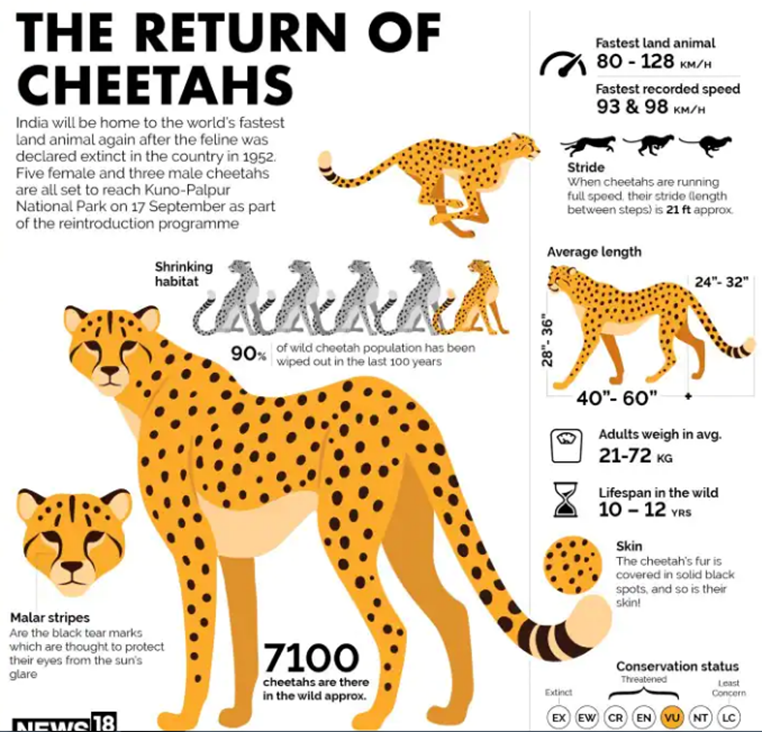Monday, 26th December 2022
Vajpayee's Efforts: India-China Relations
In News
Leaders of the country including the Prime Minister, paid tribute to Atal Bihari Vajpayee, the former prime minister of India, on his 98th birth anniversary, recalling his “indelible contribution” to the country.
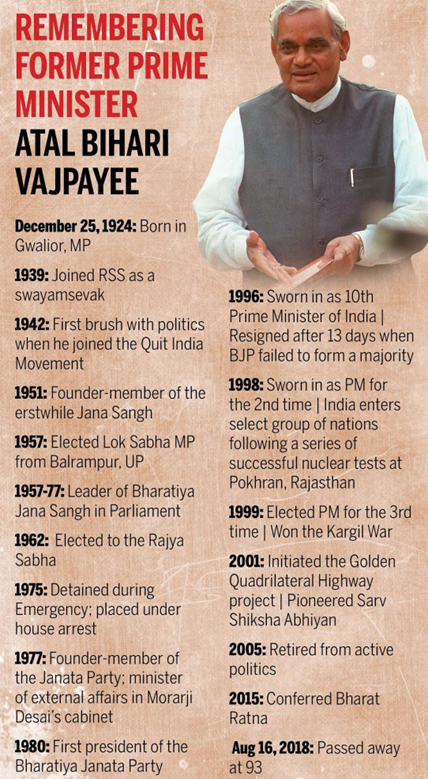 About Atal Bihari Vajpayee
About Atal Bihari Vajpayee
- Atal Bihari Vajpayee was a towering politician and statesman of his time, who became the foreign minister under the Morarji Desai government in 1977.
- He was an accomplished writer, a distinguished orator and a poet. He was a journalist before being appointed as the political secretary of Shayma Prasad Mookerjee.
- He entered the Lok Sabha in 1957 after winning the Balrampur seat in UP and remained a member of parliament for 47 years. He was elected 11 times to the Lok Sabha, and twice as a Rajya Sabha member.
- He was Prime Minister of India for three terms.
- He was awarded Padma Vibhusan in 1992 and Bharat Ratna in 2015.
- He ushered an era of development and good governance under his leadership, His birth anniversary (25th December) was declared as Good Governance Day in 2015.
What was his role in the normalization of the Sino-Indian relationship?
- Resumption of dialogue: After the 1962 wars, the Indo-China relationship became strained and there was a standstill on the resolution of border issues. Vajpayee’s visit to China in 1979 unfroze the border issue and started a new chapter in India-China relations.
- Improved bilateral relations: Vajpayee’s visit to Beijing in 2003 during his prime ministership brought India and China closer. Apart from signing pacts which improved social, political and economic relations, Vajpayee’s efforts ushered in a new era of cooperation between the two countries.
- Appointment of Special Representatives: Vajpayee’s efforts led to the appointment of Special Representatives (SRs) on both sides for negotiating border disputes. Under the SR mechanism, 22 rounds of talks have been held, the last of which was hosted by New Delhi in December 2020.
- Mutual concessions: India under Atal Bihari Vajpayee, for the first time, recognized that “the Tibet Autonomous Region is part of the territory of the People’s Republic of China”. In return, China recognized Sikkim as part of India by agreeing to “designate Changgu of Sikkim state as the venue for the border trade market”.
What were the other contributions of Atal Bihari Vajpayee?
- Under Vajpayee, India successfully carried out the nuclear test, or Operation Shakti, in Pokhran on 13 May 1998.
- The NDA government under Vajpayee released the telecom policy of 1999 which was instrumental in bringing up private players and structural reforms in a monopolized sector. It led to significant growth in mobile subscribers.
- He unveiled the first moon exploration plan of India, Chandrayaan 1.
- Few flagship initiatives under his leadership were Sarva Shiksha Abhiyan, Pravasi Bharatiya Divas and Pradhan Mantri Gram Sadak Yojana.
Source:
https://indianexpress.com/article/explained/explained-politics/vajpayee-china-outreach-8343657/
Free grains scheme under food security law
In News:
- Union cabinet decides not to extend the Pradhan Mantri Garib Kalyan Anna Yojana (PMGKY)
About the News:
- The government has recently announced to discontinue the extension of PM Garib Kalyan Anna Yojana (PMGKAY) owing to improvement in the economic prospects and opening of the markets.

- The government will, however, continue to provide free rations to the poor under the National Food Security Act, 2013 which was earlier providing rice at Rs 3 per kg and wheat at Rs 2 per kg.
- The step is expected to cost centre around Rs 2 lakh crore for food security while it will benefit around 81.35 crore people covered under the NFSA who will now get food grains for free.
- Also, those who used to get 35 kg (21 kg rice and 14 kg wheat) under the Annadata yojana will continue to get it for free while other people will get 5kg per person for free.
- Previously, the government had launched One Nation One Ration Card Scheme which provides an option to all eligible ration cardholders or beneficiaries covered under the National Food Security Act (NFSA), 2013 for accessing their entitlements from anywhere in India.
Pradhan Mantri Garib Kalyan Anna Yojana (PMGKY)
- About: The PMGKAY scheme was launched in April 2020 as part of Atmanirbhar Bharat to supply free food grains to migrants and the poor as relief from the first nationwide lockdown due to Covid-19 in March 2020.
- Implementation: The Phase-I of this scheme was operational in 2020, while Phase VI of the scheme was extended from April-September, 2022 benefiting over 80 crore beneficiaries of NSFA.
- Components: Under this scheme, the centre provides 5kg of free food grains per month to the poor which is in addition to the subsidized (Rs 2-3 per kg) ration provided under the National Food Security Act (NFSA) to families covered under the Public Distribution System (PDS).
- Corpus burden: The government said in a statement that it will spend around Rs 3.4 trillion in total on PMGKAY since its inception in April 2020 and has allocated almost 100.3 million tonnes of free foodgrains since the beginning of the scheme, which is in addition to the normal ration provided to each household.
Importance:
- Cushion: PMGKY absorbed the shock of the pandemic for the extremely poor especially in the states of Bihar, Odissa and Uttar Pradesh.
- Attaining welfare: While the expenditure numbers on food distribution and subsidy provisions seem fiscally expensive, the schemes have provided distress relief to the neediest.
- Better control: It helped the Government to control its food buffer stocks better and reduce wastage of procured food grains at a time when procurement figures for rice and wheat by the Food Corporation of India remain high.
- Food security: The PDS and the PMGKY have not only enabled basic food security but have also acted as income transfers for the poor by allowing them to buy other commodities that they could not have afforded if not for the benefits.
Source:
https://www.thehindu.com/opinion/op-ed/weighing-in-on-pmgkay-the-free-grains-scheme/article66149854.ece
Polar bears in key Canada region dying: Causes, effects
In news
A new research survey has revealed that Polar bears in Canada’s Western Hudson Bay, an inland sea connected to the Arctic Ocean, are dying at a fast rate.
About Survey findings
- The latest survey shows Western Hudson Bay has 618 polar bears, down from 842 in 2016.
- Further, according to the researchers, Western Hudson Bay has witnessed a drop of around 50% in the population of polar bears since the 1980s.
- The survey is another addition to the long list of reports and studies that have highlighted the vulnerability of polar bears to climate change.
Impact of Climate change on Polar Bears
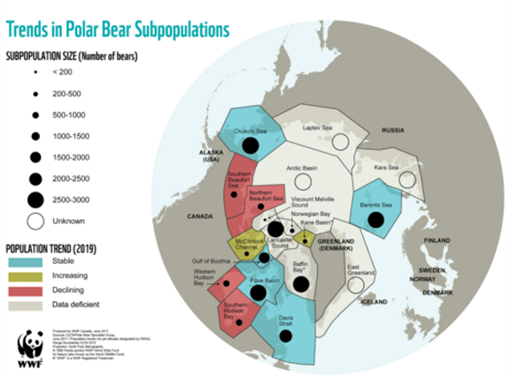
- The Arctic sea ice is crucial to polar bears’ survival as they use it for hunting seals — their chief food, and also for travelling, mating and resting.
- However, with rising global temperatures, the sea ice is breaking earlier in summer and refreezing later in winter, due to which polar bears get less time to hunt and have to stay hungry for longer and travel greater distances.
- This extra need for energy coupled with a lack of food, and dietary changes leads to a drop in the average weight of adult bears, along with a higher mortality rate of bear cubs.
- Further, when temperatures soar and there is a lack of ice, the dens that Polar Bears build to protect their young might collapse as well.
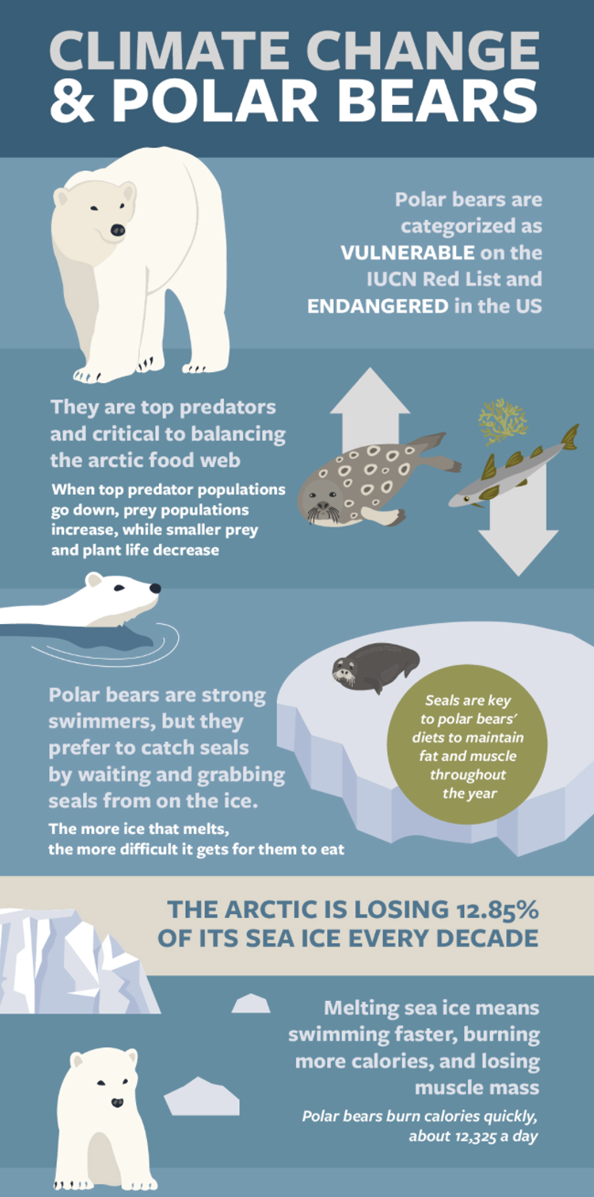 Importance of Polar Bears
Importance of Polar Bears
- Polar bears are one of the most significant predators in the Arctic region and they keep biological populations in balance.
- The big kills made by them serve as a food resource for scavengers like Arctic foxes and Arctic birds.
- If polar bears aren’t able to hunt animals like seals, it would result in their overpopulation, which could endanger the existence of crustaceans and fish which are an important food source for local human populations as well as other Arctic wildlife.
Impact of Arctic Ice Loss
- Temperatures
- Less ice means less reflected heat, meaning more intense heat waves worldwide. But it also means more extreme winters: as the polar jet stream—a high-pressure wind that circles the Arctic region—is destabilised by warmer air, it can dip south, bringing bitter cold with it.
- Coastal communities
- The glacial melt of the Greenland ice sheet is a major predictor of future sea level rise; if it melts entirely, global sea levels could rise further.
- Food
- Polar vortexes, increased heat waves, and unpredictability of weather caused by ice loss are already causing significant damage to crops on which global food systems depend.
- Wildlife
- When there’s less sea ice, animals that depend on it for survival must adapt or perish. Loss of ice and melting permafrost spells trouble for polar bears, walruses, arctic foxes, snowy owls, reindeer, and many other species.
- Permafrost
- Arctic ice and permafrost, ground that is permanently frozen store large amounts of methane, a greenhouse gas that contributes to climate change.
- When it thaws, that methane is released, increasing the rate of warming.
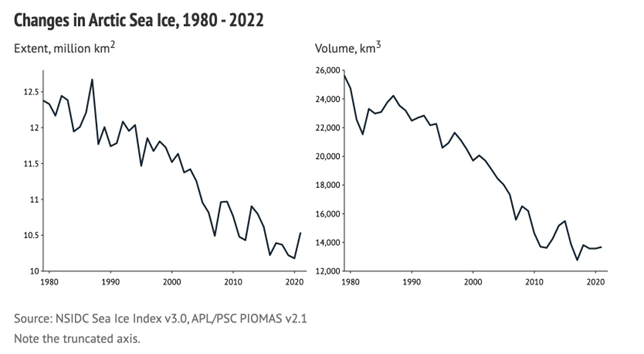
Source
Polar bears in key Canada region dying: Causes, effects
Image source
https://files.worldwildlife.org/wwfcmsprod/images/Polar_Bear_Population_Update_2019/portrait_overview/9f3u31f7uf_Polar_Bear_Population_Update_2019.png
https://botanicalpaperworks.com/wp-content/uploads/2020/02/Polar-Bears-and-Climate-Change-Infographic-new2-1.jpg
CPCB: Fewer Polluted Rivers, Worst Unchanged
Why in news?
According to a recently released report by the Central Pollution Control Board (CPCB), the number of polluted stretches in India’s rivers has fallen from 351 in 2018 to 311 in 2022 though the number of most polluted stretches is practically unchanged.
|
About CPCB
|
What is Bio-chemical Demand (BOD)?
- The amount of dissolved oxygen (DO) required (i.e., requested) by aerobic biological organisms to break down organic material present in a given water sample at a given temperature over a certain time period is known as the biochemical oxygen demand (BOD; also known as biological oxygen demand).
- The BOD value, which is frequently used as a proxy for the level of organic pollution in water, is typically given in milligrammes of oxygen used per litre of the sample during 5 days of incubation at 20 °C.
- Biochemical Oxygen Demand (BOD) exceeding 3.0 mg/L (milligram per litre) is identified as a polluted location. A BOD less than 3 mg/L means the river stretch is fit for ‘Outdoor Bathing.’
- Stretches with a BOD exceeding 30 mg/L are considered ‘Priority 1,’ meaning, the most polluted and thus needing the most urgent remediation. There are five such categories with ‘Priority 2’ indicating a BOD of 20-30 mg/L and ‘Priority 5’ indicating 3-6 mg/L.
Key Points of the Report
- The report is based on the water quality at 4,484 locations in 28 States and seven Union Territories including rivers, lakes, creeks, drains and canals.
- According to the report, “No change/ slight change in Priority I & II category of polluted river stretches indicates that further stringent actions are required for control of organic pollution from various point sources of pollution including the development of infrastructure and its proper operation for treatment of wastewater before discharge into recipient water bodies.”
Improvements:
- All of the improvements were in river stretches that required relatively lesser intervention.
State-wise Data (based on priority status):
- Gujarat and Uttar Pradesh had the maximum number of ‘Priority 1’ river stretches (6),
- Maharashtra had the maximum number of polluted river stretchese. 55, followed by Madhya Pradesh (19), Bihar (18), Kerala (18), Karnataka (17) and Uttar Pradesh (17).
Reasons behind improvement:
- The overall decrease in the net number of identified polluted river stretches, which have shown improvement in the water quality, “could be attributed” to the efforts being made for the development of infrastructure for sewage management, industrial effluent management, waste management and enforcement of regulations for prevention and control of pollution in rivers.
|
Government Initiatives National Water Mission (2010):
National Water Policy (2012):
National Green Tribunal Orders:
Namami Gange Program:
|
Content Source Link:
https://www.thehindu.com/news/national/fewer-polluted-river-stretches-but-worst-stretches-unchanged/article66304409.ece/amp/
Good governance day - Edukemy Current Affairs
- Context: Since 2014, December 25 is celebrated as Good Governance Day to mark the birth anniversary of former PM Atal Bihari Vajpayee.
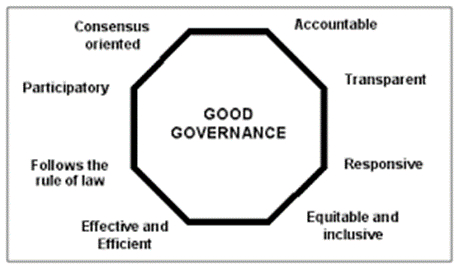
- It relates to the political and institutional processes and outcomes that are necessary to achieve the goals of development. The true test of 'good' governance is the degree to which it delivers on the promise of human rights: civil, cultural, economic, political and social rights.
- This day is celebrated to increase awareness of government services and accountability among people and inculcate “good governance” as a habit for civil servants.
- E-Governance is an integral part of it and maybe understood as an electronic medium in order to facilitate an efficient, speedy and transparent process of disseminating information to the public, and other agencies, and for performing government administration activities.
- Sources of Good Governance:
-
- Bhagavad Gita
- Arthashastra (2nd-3rd century BC)
- Preamble of the Indian Constitution is a reflection of good governance
- ARC Reports (1 to 15) are a rich source of understanding and practicing good governance.
- SDG 16 is directly linked to improvement in governance, inclusion, participation, rights, and security.
Source:
https://www.unescap.org/sites/default/files/good-governance.pdf
https://indianexpress.com/article/explained/atal-bihari-vajpayee-and-good-governance-day-8343437/
Emperor Penguins - Edukemy Current Affairs
- Context: Why Antarctica’s emperor penguins could be extinct by 2100
- Emperor penguins (Aptenodytes forsteri) are the largest of all penguin species with an average weight of around 30kg (66lb) and a height of approx. 1.15m (3.8ft).
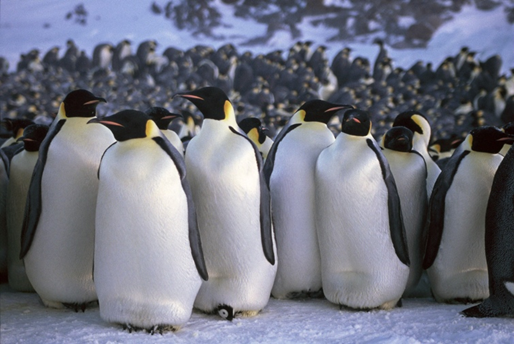
- Emperor penguins are found all around the coasts of the Antarctic continent.
- The emperor penguin relies on ice for breeding and is the most vulnerable of Antarctica's species.
- Emperor penguins breed almost exclusively on sea ice and so are perhaps the only species of bird that never sets foot on land.
- As global warming worsens, Antarctica’s ice-free areas are predicted to expand, rapidly changing the habitat available for wildlife.
- The combination of more human visitors and milder temperatures in Antarctica creates the conditions for invasive species to thrive, leaving the endemic species more vulnerable.
- The Emperor Penguin is listed as Near Threatened as it is projected to undergo a moderately rapid population decrease as Antarctic Sea ice begins to disappear within the next few decades owing to the effects of climate change.
Sources:
https://indianexpress.com/article/explained/explained-climate/antarctica-emperor-penguins-extinct-2100-8343481/
Image source:
https://www.coolantarctica.com/Antarctica%20fact%20file/wildlife/Emperor-penguins.php
Bomb Cyclone - Edukemy Current Affairs
- Context: Large parts of the United States and Canada are currently under the grips of a 'bomb cyclone'.
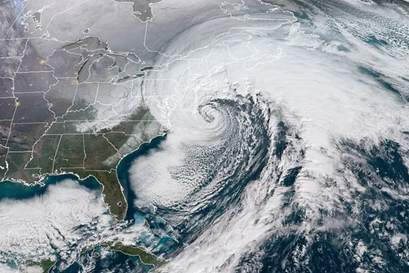
- A bomb cyclone occurs when the pressure drops rapidly and significantly in low-pressure mass which is usually the result of warm and cold air masses overlapping.
- This quickly increases the pressure difference, or gradient, between the two air masses, making the winds stronger. This process of rapid intensification is called bombogenesis.
- They had been met over the Great Lakes, where frigid Arctic air from the meandering polar vortex met very warm air to the east.
- As the area where the two air masses meet, called the Arctic front, moves northward and eastward, conditions for bombogenesis continue moving as well.
- It moves counterclockwise in the Northern Hemisphere.
- Common features: blizzards, severe thunderstorms and heavy precipitation.
- Difference between Hurricanes and Bomb Cyclones
-
- Hurricanes tend to form in tropical areas and are powered by warm seas. For this reason, they’re most common in summer or early fall, when seawater is warmest.
- Unlike Hurricanes, bomb cyclones arise in mid-latitudes and rarely strike in summer. Rather, they form between late fall and early spring.
Source:
https://indianexpress.com/article/explained/explained-climate/bomb-cyclone-united-states-canada-explained-8343764/
https://www.nbcnews.com/science/science-news/bomb-cyclone-speed-intensity-rcna62754
One Rank One Pension (OROP) - Edukemy Current Affairs
- Context: Pension of armed forces/family pensioners revised under OROP
- OROP means that any two military personnel retiring at the same rank, with the same years of service, must get an equal pension.

- Military personnel across the three services fall under two categories,
- the officers and
- the other ranks, which are soldiers, usually retire at age 35, in view of the need of the defence forces to maintain physical fitness, efficiency and effectiveness.
- The computation of pension is linked to the pay drawn by the personnel in a particular pay scale at the time of his/her retirement and, early retirement should not become an adverse element.
- Pay scales are revised to the higher side periodically, and the personnel retiring after the revision of the pay scales got more pensions than those who retired earlier.
- OROP bridges the gap between the rates of pension of current and past pensioners at periodic intervals.
- The scheme was implemented with retrospective effect from July 1st, 2014, with 2013 as the base year.
- Bhagat Singh Koshyari Committee Report dealt with One Rank-One Pension (OROP) and furnishes the historical background, and the reason for the demand.
Sources:
https://m.economictimes.com/wealth/save/pension-of-armed-forces/family-pensioners-revised-under-orop-check-rank-wise-hike-in-monthly-pensions-arrears/amp_articleshow/96474742.cms
https://www.business-standard.com/podcast/current-affairs/what-is-one-rank-one-pension-122041500062_1.html
Image source:
https://economictimes.indiatimes.com/news/defence/implement-orop-in-urgent-time-frame-10-ex-service-chiefs-to-pm-narendra-modi/articleshow/48513099.cms
National Farmers Day and Charan Singh
Why in news? Recently, Farmers were felicitated for innovative farming on the occasion of National Farmers Day.
About:
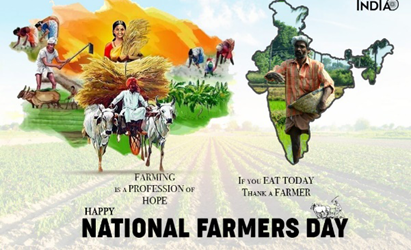
- National Farmers’ Day, or Kisan Diwas, is celebrated on 23 December every year to mark the birth anniversary of Chaudhary Charan Singh.
- It is celebrated to promote awareness among the citizens to understand the importance of the contributions of the farmers to the society and overall economic and social development of a country.
Charan Singh:
- He served as the fifth Prime Minister of India from 28 July 1979 to 14 January 1980.
- Being a proponent of rural and agricultural development, he made continuous efforts for keeping agriculture at the centre of planning for India.
https://www.thehindu.com/news/national/karnataka/farmers-felicitated-for-innovative-farming-on-the-occasion-of-national-farmers-day/article66298285.ece
Sand battery - Edukemy Current Affairs
Why in news? Sand batteries can store a significant extent of thermal energy- Sand batteries -and can aid Clean Energy Solutions.
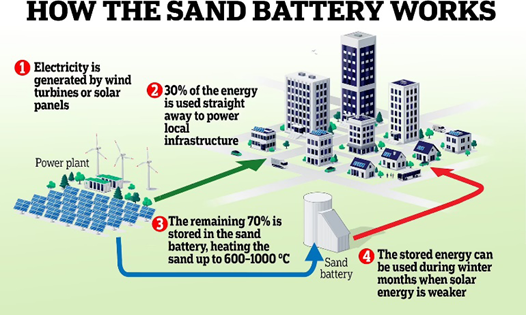
About:
- A “sand battery” is a high-temperature thermal energy storage that uses sand or sand-like materials as its storage medium.
- Its main purpose is to work as a high-power and high-capacity reservoir for excess wind and solar energy.
- The energy is stored as heat, which can be used to heat homes or to provide hot steam and high-temperature process heat to industries that are often fossil-fuel dependent.
https://www.downtoearth.org.in/news/renewable-energy/this-sand-battery-could-be-a-solution-for-europe-s-energy-crisis-86723#:~:text=Published%3A%20Thursday%2022%20December%202022&text=A%20new%20battery%20technology%20by,facing%20an%20unprecedented%20energy%20crisis
Incovacc - Edukemy Current Affairs
Why in news? Bharat Biotech’s intranasal vaccine, BBV154 or Incovacc is the world’s first intranasal vaccine to be approved as a booster dose for Covid-19.
 About:
About:
- The nasal vaccine is a recombinant replication-deficient adenovirus vectored vaccine with a pre-fusion stabilized spike protein.
- With the vaccine being delivered through a nasal spray, it will do away with the need for needles and syringes currently required for all the Covid-19 vaccines available.
- Incovacc is effective for Omicron variants that replicate in the upper respiratory tract before entering the lungs.
https://indianexpress.com/article/india/intranasal-vaccine-gets-clearance-as-booster-option-in-covid-fight-8341377/
Innovations for Defence Excellence (iDEX)
Why in news? Recently, Innovations for Defence Excellence (iDEX), has reached a milestone with the signing of its 150th contract.
 About:
About:
- iDEX is an initiative taken by the government to contribute towards the modernization of the Defence Industry.
- It was launched by the Government in April 2018.
- iDEX aims to promote innovation and technology development in Defence and Aerospace by engaging Industries.
- iDEX will be funded and managed by Defence Innovation Organization (DIO) and will function as the executive arm of DIO.
https://pib.gov.in/PressReleseDetailm.aspx?PRID=1885420#:~:text=The%20contract%20relates%20to%20an,Altair%20Infrasec%20Pvt%20Ltd%2C%20Pune
India to Launch Indigenous CERVAVAC Vaccine
Why in news? India is expected to roll out the indigenously developed CERVAVAC vaccine by mid-2023.
About:
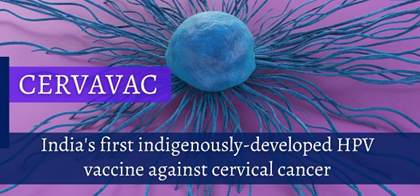
- It is India’s first indigenously developed quadrivalent human papillomavirus (qHPV) vaccine that is said to be effective against four strains of the virus - Type 6, Type 11, Type 16 and Type 18.
- CERVAVAC is based on VLP (Virus-Like Particles), similar to the Hepatitis B vaccination.
- It has a significant potential to eliminate cervical cancer.
- The vaccine is extremely effective only when it's administered before the first sexual intercourse.
https://www.thehindu.com/sci-tech/health/centre-to-provide-cervical-cancer-vaccines-for-girls-aged-9-to-14/article66293235.ece
Joynagar Moa - Edukemy Current Affairs
Why in news? The Joynagar Moa, the popular Bengal sweet got a 10-year extension for its Geographical Indication (GI) tag.
 About:
About:
- The moa is a popped-rice ball held together with fresh date-palm jaggery.
- It is available only during the colder months of the year.
- Received its GI certification in 2015 due to the efforts of the ‘Joynagar Moa Nirmankari Society’.
https://www.thehindu.com/news/national/other-states/this-winter-turning-out-to-be-sweet-for-moa-makers/article66297404.ece/amp/
India's Real Demographic Dividend: A Heavy Discount
Exam View: Demographic Dividend, World Population Prospects 2022, National Family Health Surveys, Significance of India’s Demographic Dividend, Challenges Associated with India’s Demographic Dividend, Periodic Labour Force Survey.
In News: India’s demographic dividend is for real, but it needs to be discounted heavily
The demographic dividend opportunity window opened for India in 2005–2006 and will close in 2055–2056. Economic Survey 2018–19 predicts that India's Demographic Dividend would reach its peak around 2041 when 59% of the population will be of working age, or 20–59 years old. It has enormous potential for India's economic development.
A potential, however, does not guarantee that it will materialise. It is an opportunity that can be taken advantage of provided the proper circumstances exist or are established. These prerequisites include a populace that is healthy, particularly women and children, educated youth, particularly girls, a competent workforce, a high-performing economy that is producing the necessary high-quality jobs, and individuals who are employed for pay.
It is time for India to harness the demographic potential of its population and look toward enabling the environment to achieve real economic growth.
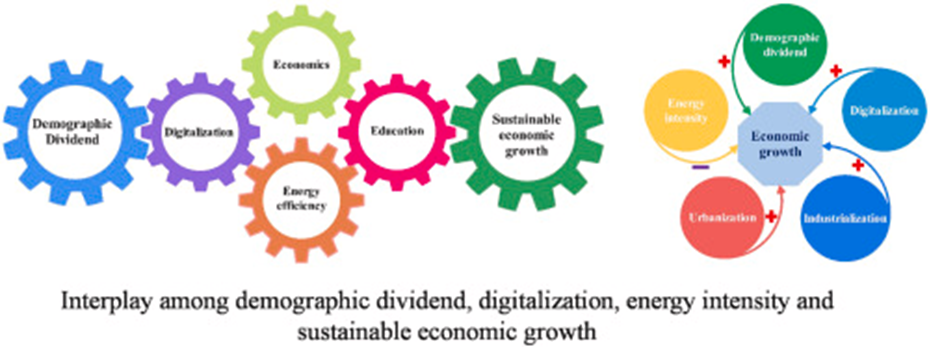
|
Significance of India’s Demographic Dividend |
|
Challenges Associated with India’s Demographic Dividend
- Low Female Labour Force Participation: India’s labour force is constrained by the absence of women from the workforce. According to the Periodic Labour Force Survey, 2018-19, the female labour force participation rates (LFPR) among women aged above 15 years are as low as 26.4% in rural areas and 20.4% in urban areas in India.
- High Dropout Rate: While over 95% of India’s children attend primary school, the National Family Health Surveys confirm that poor infrastructure in government schools, malnutrition, and scarcity of trained teachers have resulted in poor learning outcomes and high dropout ratios.
- The disparity in Demographic Dividend Window: Due to the heterogeneity of India's population, the window of demographic dividend is different in different states. Kerala's population is already ageing, while Bihar's workforce is projected to continue to grow until 2051. As a result, 11 of the 22 major states will have a smaller working-age population by 2031.
- Jobless Growth: In light of deindustrialization, deglobalization, and the industrial revolution 4.0, there is growing concern that future growth will result in joblessness. The Economic Survey 2019 highlights the gap between the projected annual increase in the working age population and the available number of jobs.
- Informal nature of Economy: The informal nature of the economy in India is another hurdle in reaping the benefits of demographic transition in India.
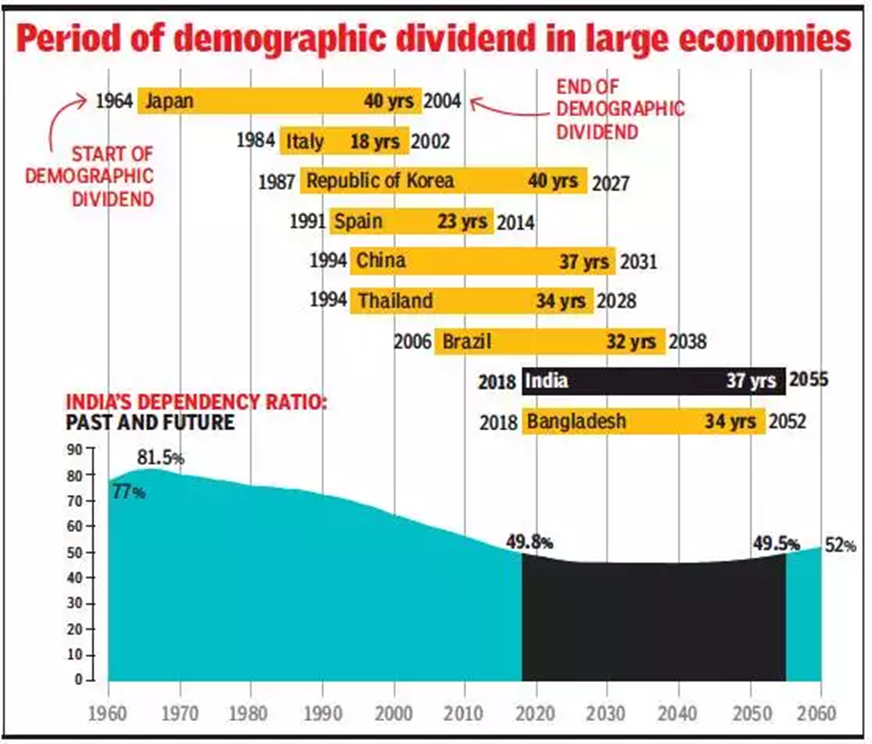
Way Forward:
- Emerging Technologies: The expansion of research and development and incentivising Startups in the field of Quantum Technology , Blockchain, Internet of things can help India to take advantage of emerging technologies to its advantage and provide Indian youth with the experience and skills to become global role models.
- Federal Approach: For policy coordination between states on emerging population issues such as migration, ageing and urbanisation, a new federal approach to governance reforms for the demographic dividend is required.
- Education Standards: In both rural and urban settings, the public school system must ensure that every child completes high school and goes on to skilling, training, and vocational education.
- Health-Related Requirements: There is a need to increase funds for health as well as upgrade health facilities based on modern technologies and to provide reproductive healthcare rights-based access.
- Gender Budgeting: There is a need to rectify gender inequities and ensure women have access to equal socio-economic status as men. Gender responsive budgets and policies can contribute to achieving the objectives of gender equality, human development and economic efficiency.
https://economictimes.indiatimes.com/opinion/et-commentary/view-indias-demographic-dividend-is-for-real-but-it-needs-to-be-discounted-heavily/articleshow/96464045.cms?from=mdr
Scotland votes to lower the age to legally change gender
Background
Scottish government has voted in favour of lowering the age for people to apply for legally changing their gender from 18 to 16. This has been resented by the Westminster government in London which is weighing its options to block the controversial law.
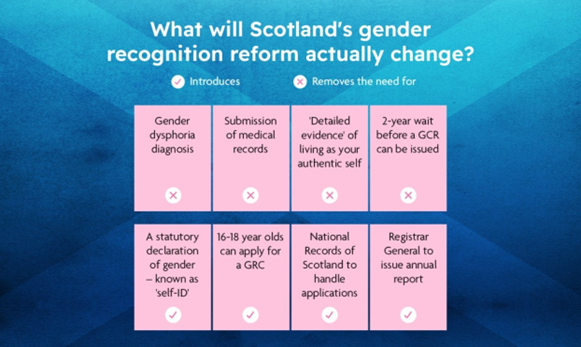 About the Gender Change law
About the Gender Change law
- The Scottish Parliament voted 86 votes to 39 to pass the Gender Recognition Reform (Scotland) Bill and also to remove the need for a medical diagnosis of gender dysphoria.
- The controversial self-identification system would make it easier for people to obtain a gender recognition certification (GRC), which according to critics could put vulnerable people at risk.
- The UK government can technically prevent the legislation from becoming law by blocking Royal Assent, which is essential to get a formal agreement from the British monarch and to become an Act of the Scottish Parliament.
- British parliament could block Scottish laws on the grounds of violating UK-wide equalities legislation. It could also look for the ramifications of the legislation over the 2010 Equality Act.
- Opponents of the Gender Recognition Reform (Scotland) Bill also fear that the legislation could have a potential impact on women and girls, in particular single-sex spaces, like toilets.
What is the process for declaring one’s desired sex in India?
- In India, the rights of transgender persons are governed by the Transgender Persons (Protection of Rights) Act, 2019 and the Transgender Persons (Protection of Rights) Rules, 2020.
- Under the Rules, an application to declare gender is to be made to the District Magistrate. Parents can also make an application on behalf of their child.
Source:
https://theprint.in/world/scotland-votes-to-lower-age-to-legally-change-gender-london-mulls-options-to-block-law/1278978/?amp
Share the article
Get Latest Updates on Offers, Event dates, and free Mentorship sessions.

Get in touch with our Expert Academic Counsellors 👋
Frequently Asked Questions
UPSC Daily Current Affairs focuses on learning current events on a daily basis. An aspirant needs to study regular and updated information about current events, news, and relevant topics that are important for UPSC aspirants. It covers national and international affairs, government policies, socio-economic issues, science and technology advancements, and more.
UPSC Daily Current Affairs provides aspirants with a concise and comprehensive overview of the latest happenings and developments across various fields. It helps aspirants stay updated with current affairs and provides them with valuable insights and analysis, which are essential for answering questions in the UPSC examinations. It enhances their knowledge, analytical skills, and ability to connect current affairs with the UPSC syllabus.
UPSC Daily Current Affairs covers a wide range of topics, including politics, economics, science and technology, environment, social issues, governance, international relations, and more. It offers news summaries, in-depth analyses, editorials, opinion pieces, and relevant study materials. It also provides practice questions and quizzes to help aspirants test their understanding of current affairs.
Edukemy's UPSC Daily Current Affairs can be accessed through:
- UPSC Daily Current Affairs can be accessed through Current Affairs tab at the top of the Main Page of Edukemy.
- Edukemy Mobile app: The Daily Current Affairs can also be access through Edukemy Mobile App.
- Social media: Follow Edukemy’s official social media accounts or pages that provide UPSC Daily Current Affairs updates, including Facebook, Twitter, or Telegram channels.

